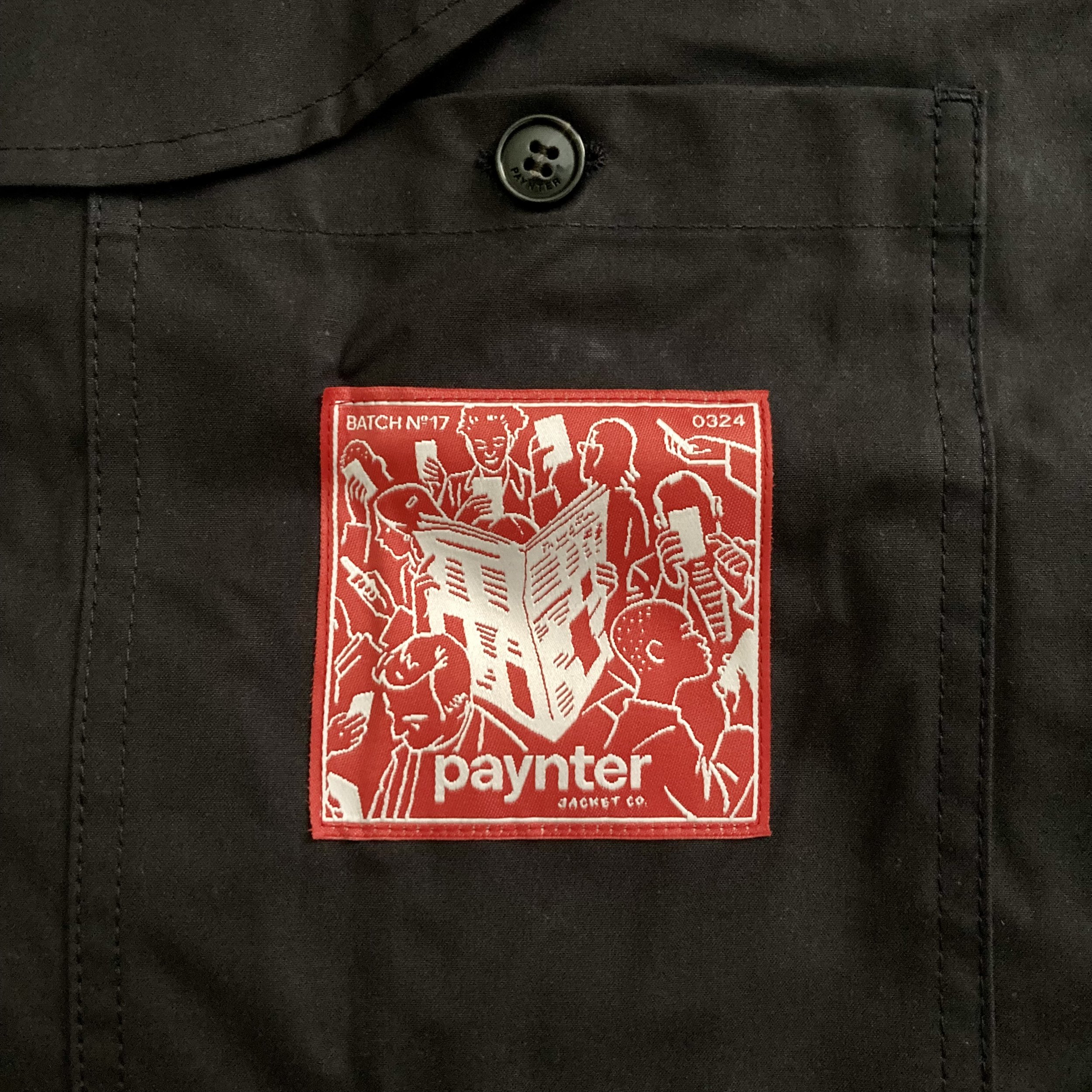What are some of the Montreal restaurants, bars, boucheries, boulangeries, cheese shops, and specialty stores that AEB actually frequents? Here’s a shortlist…
Abu Elias Boucherie et Grillade, 733 boulevard Côte-Vertu W. (Côte-Vertu), 514-747-7754—The first time we ever went to Abu Elias and discovered their huge, live-fire grilling set-up, and the phenomenal Lebanese grilled meats that were prepared there, it was a complete revelation. The impact of that first visit years ago has never really diminished, and whenever we’ve returned Abu Elias has never disappointed. We generally go there for sandwiches (shish taouk, filet mignon, sojouk, etc.), but they specialize in preparing huge mixed grill party platters for entertaining. As the name suggests, in addition to functioning as a restaurant and take-out, Abu Elias has a full halal butcher counter. They also carry many Lebanese grocery items, like breads, dips, and olives.
Aliments Viens, 4556B boulevard St-Laurent (Mile End), 514-379-4666—The city’s best source for artisanal charcuterie also happens to be a very fine butcher shop and specialty foods store. Their selection of beef, pork, chicken, and veal is well-sourced and expertly butchered. Their exceptional charcuterie counter (cold cuts, sausages, saucissons secs, pâtés, etc.) is always tantalizing. And they also sell an excellent selection of conservas, pastas, eggs, cheeses, prepared dishes, and other delicacies.
Bar Henrietta, 115 avenue Laurier W. (Mile End), (514) 276-4282—Chef Eric Dupuis created this beautiful Mile End bar a number of years ago. It’s been a fixture of the neighbourhood ever since. Great wine selection. Lovely cocktails. And a short, but thoughtful, and perfectly executed menu of bar snacks and small plates.
Boulangerie Automne, 6500 avenue Christophe-Colomb (Petite Patrie)—If there’s a better bakery for bread and viennoiseries in Montreal, we don’t know of it. Our go-to bakery for breads that I don’t bake at home, like baguettes, as well as chocolatines, pains aux raisins, danishes, buns, and other gourmandises. Truly outstanding, and now working closely with the amazing people at Moulin de Charlevoix to source much of their flour (!).
Caffè in Gamba, 5263 ave du Parc (Mile End), 514-656-6852—For a few years now, my café of choice. Features an extensive selection of third wave coffee beans from across North America, and a top-notch espresso program with some talented (and award-winning) baristas. Plus, they renovated during the pandemic, introducing a bright, light-hued new look—very L.A., actually—that’s been perfect for the New Age.
Camellia Sinensis, 351 rue Émery (Latin Quarter) & 7010 rue Casgrain (Little Italy/Jean-Talon Market)—Not only the best tea shop in Montreal, but one of the very best in North America. Extremely knowledgeable and well-travelled staff. Truly magnificent selection of teas from India, Japan, China, Taiwan, and beyond.
Carlota Boulangerie Mexicaine, 4804 rue St-Urbain (Mile End), 514-513-8225—One of the best bakeries to appear on the Montreal food scene in years is this fantastic (and fantastically friendly) Mexican boulangerie. We’re huge fans of their pastries (especially their cinnamon conchas) and their tamales. Don’t miss their fabulous pan de muerto in season (late October into November)!
Chez Nino, 192 Place du Marché-du-Nord (Little Italy/Jean-Talon Market), 514-277-8902—A superb green grocer, and an excellent source for rare and hard-to-find products like Buddha’s Hand citron and Rosa di Gorizia radicchio.
Chez Vito, 5180 rue St-Urbain (Mile End), 514-277-1981—A Mile End fixture for decades, and deservedly so. In addition to their wide selection of meats, cold cuts, and cheeses, they also happen to be an excellent source for Italian specialty food products, including pastas, olive oils, preserves of all kinds, and seasonal delicacies (like imported panettone).
Double’s, 5171 avenue du Parc (Mile End)—Looks like a dive bar. Feels like a dive bar. Acts like a dive bar. But it also happens to be a cheerful, dive-y restaurant that’s overseen by Executive Chef Danny Smiles. The place in Mile End for a smashburger and a martini. Open LATE. Double’s also happens to be a very enthusiastic sports bar, with a particular enthusiasm for the Habs (natch) and the Eagles.
Elena, 5090 rue Notre-Dame Ouest (St-Henri), 514-379-4883—Despite its long history in our fair city, for years pizza was a sorry affair in Montreal. It took new generation restos like Elena, with their wood-fired, perfectly blistered, slow-fermented sourdough pies, to put an end to this travesty once and for all. Personal faves: rossa with stracciatella; margherita; M. Funguy (with loads of mushrooms); artichoke and ham. And although Elena is best known for its pizza, everything they do, they do well, including top-notch pasta dishes, overstuffed hoagies, a killer wine selection, coffee, and desserts. Still one of my favourite dining rooms in the city, too, and their terrasse is spectacular when the weather allows.
Épicerie Lulu, 2507 Notre-Dame W. (Little Burgundy), 515-507-LULU—Exactly the kind of Lebanese street food specialist I’d been hoping and dreaming for in Montreal’s central core. Shawarma, grilled meats, manakeesh freshly baked to order in their traditional (gas-fired) oven. My personal obsession recently has been their moitié-moitié or “cocktail” manakeesh, with cheese on one side and zaatar on the other—but whatever you do, get it all-dressed with cucumbers, olives, tomatoes, and mint, you won’t regret it. Don’t miss out on their Bonjus brand pineapple juice boxes—they’re really tasty, and I’ve been told they’re deeply nostalgic for those who’ve spent time in Lebanon.
Épices de cru, 7070 avenue Henri-Julien, C-6 (Little Italy/Jean-Talon Market), 514-273-1118—No other spice shop in the city compares, and, frankly, Épices de cru is one of the finest and most ambitious spice shops in all of North America. Ethné & Philippe de Vienne have spent decades tracking down the most exceptional spices and herbs around the world in-person. Their sourcing and their ability to forge contacts are legendary. Consequently, their selection is spectacular and always of the highest quality. A treasure.
Etna Pastaficio,, 244 rue Jarry E. (Villeray/Jarry Park), (438) 408-6030—Etna started off as a restaurant and wine bar, but during the pandemic they made a brilliant pivot: they became a pastaficio, an artisanal pasta shop specializing in top-notch, freshly produced stuffed and extruded pastas, as well as wine.
Euro-Deli Batory,, 115 rue Saint-Viateur W. (Mile End), (514) 948-2161—Hands down the restaurant we’ve frequented the most in the 25 years since we moved to Montreal. Does that mean that Euro-Deli Batory is our favourite restaurant in the city? It’s quite possible. We’ve probably dined there over 1,000 times. No joke. The thing is I only ever order the same handful of things (potato-cheese pierogis, cabbage-mushroom pierogis, clear borscht (winter), cold borscht (summer), kielbasa, and occasionally their multi-decker kanapka (sandwich).
Fairmount Bagel, 74 rue Fairmount Ouest (Mile End), (514) 272-0667—In our honest opinion, the definitive Montreal bagel. Don’t get distracted by the silly novelty flavours, or the bagel-doughnuts (?!!?!!?). Just stick to the classics: sesame, poppy, and everything. If you have any doubts, just order sesame—they are always hot, 24/7/365. There are few pleasures as elemental as biting into a fresh, hot Fairmount sesame bagel just outside the store on a bracingly cold winter day, the steam billowing into the air, the purity and simplicity of that tender, chewy, and slightly sweet flavour—no cream cheese, no smoked salmon necessary!—reaffirming life once again.
Falafel Yoni, 54 rue St-Viateur Ouest (Mile End), 514-424-7767—Montreal used to be a pretty decent falafel town, and then it really wasn’t one for a long, long time. Thankfully, everything changed a few years ago when Falafel Yoni came along. We recommend that you get yours prepared “extra-spicy” (with additional zhug). In addition to the falafel sandwich, I recommend the house-made hummus, lemonina, and fries, while Michelle is a big fan of the sabich sandwich (chopped egg, roasted eggplant, etc.).
Fromagerie Hamel, 220 rue Jean-Talon Est (Little Italy/Jean-Talon Market), 514-272-1161—The fromagerie with the city’s largest selection of cheeses also happens to be its best. Don’t be a sucker: ask for samples before making your choices like a true Montreal cheese aficionado.
Jean-Talon Market (Little Italy/Jean-Talon)—One of Montreal’s two great green markets, and the one we frequent the most. Home to a number of places on this shortlist: Chez Nino, Épices de cru, Fromagerie Hamel, and Camellia Sinensis.
Kitano Shokudo, 143 avenue Mont-Royal Est (Plateau), (438) 383-4700—A truly phenomenal Japanese eatery featuring inventive dishes of exceptional quality, Kitano Shokudo has been one of our favourite dining destinations for the last couple of years. Beautiful fish (sashimi, chirashi, sushi), fantastic noodle dishes, first-rate ramen, etc. Don’t miss their uni carbonara!
Ma Poule Mouillée, 969 rue Rachel Est (Plateau), (514) 522-5175—One of Montreal’s outstanding Portuguese churrascarias. Their grilled chicken options (quarter, half, whole, or sandwich) are all fantastic, as is their grilled chouriço and grilled squid, but the true revelation might be their Portuguese poutine: fries, sauce, grilled chicken, grilled chouriço, Sao Jorge cheese, and piri-piri sauce. They invented it. They own it. Life in Montreal has never been the same since.
Milano, 6862 boulevard St-Laurent (Little Italy), 514-273-8558—Montreal’s Italian specialty foods emporium. Essential shopping for Italophiles like ourselves.
Mr. Patty, 5312 avenue Patricia (Montreal West), 514-483-2323—The city’s finest Jamaican bakery, specializing, as their name suggests, in patties. The veggie and chicken varieties are both excellent, but it’s the beef patty, with its oxtail unctuousness, that is the runaway hit. Buy them by the dozen! Excellent rotis, too.
Ohayo Café, 145 avenue Mont-Royal Est (Plateau)—From the team that brought us the outstanding Kintado Shokudo right next door, comes Ohayo Café, a casual Japanese coffee shop and diner. Don’t get fooled by the laid-back atmosphere, Ohayo’s kitchen is top-notch, serving up fantastic Japanese sandwiches (fried chicken, tonkatsu, etc.), noodle dishes (like they're incredible burrata mazemen), ramen soups, and other delicacies. Their coffee program is excellent, too.
Pascal le boucher, 8113 rue St-Denis (Villeray), 438-387-6030—This is the full-service, responsibly sourced, and artfully prepared butcher shop Montreal had been waiting for. Attentive, knowledgeable service, and a fantastic selection of the best meat produced in the region.
Pâtisserie Rhubarbe, 1479 avenue Laurier Est (Laurier Village), 514-316-2935—Stephanie Labelle’s boutique has been a fixture on Laurier East now for over a decade, and while her store has been one of the city’s finest pâtisseries since the day they opened, Rhubarbe keeps getting finer and finer. Brilliant pastries, outstanding cakes, excellent prepared foods and preserves, and a truly beautiful shop. What more could you ask for in a pâtisserie?
Piazza Salumi, 6833 boulevard St-Laurent (Little Italy), 514-276-6833—Kind of a mini-Milano, directly across the street from the mega-Milano, generally a lot quieter, and featuring Fumagalli’s exceptional line of imported Italian charcuterie.
Pumpui, 83 rue St-Zotique Est (Little Italy), 514-379-3024—Pumpui specializes in the David Thompson/Pok-Pok/Night + Market school of street/night market Thai food, and we wouldn’t have it any other way. Honest, unabashedly spicy & funky, and often adventurous, Pumpui upended the Thai food scene in Montreal. Don’t be afraid to explore the menu fully—who knows what surprises you’ll find—but don’t forget to order some of their phenomenal chicken wings.
Rôtisserie La Lune, 391 Rue Saint-Zotique E. (Little Italy), 514-948-9999—The latest venture from the good people—namely, Marc-Olivier Frappier and Vanya Filipovic—who brought us Vin Mon Lapin and who have been fixtures of the Montreal dining scene at its very best (Joe Beef, Vin Papillon, Vins Dame-Jeanne, etc.) for decades now. This time around they had the idea of doing their own take on a classic Quebec-style rôtisserie chicken joint (what’s sometimes known as “BBQ” around here), but with only the most delicious properly-sourced chickens, and all the essentials—the fries, the salade de chou, and, most importantly, the sauce—done comme il faut (as they should be). The menu is abundant with other delicacies (the scallop pot pie is a fave of ours) and with inspired specials, but we insist on getting the rôtisserie chicken/fries/sauce combo every time. That sauce is truly an elixir, especially in a city and a province that has largely given up on making such preparations from scratch. Oh, yeah: to make it even clearer that La Lune is going that extra mile, you can also get rôtisserie pintade (guinea hen) or even half & half, chicken and pintade, if you prefer.
Rotisserie Portugalia, 34 rue Rachel Ouest (Plateau), 514-282-1519—For years Rôtisserie Portugalia was our favourite churrascaria in town, then there was a decline and we moved on to other places for our spicy Portuguese-style grilled chicken. Now things at Rôtisserie Portugalia are not only back on track, they’ve found a new lease on life. Not only is their grilled chicken on point, but they now offer one of Montreal’s best sandwiches, the appropriately named Tony Supremo.
Sabor Latino, 4387 boulevard St-Laurent (Plateau), 514-848-1078—Along with Andes, this is Montreal’s premier source for all things Latin American—Mexican, Central American, South American, and Caribbean. They also have a store up in the Plaza St-Hubert area, but this store, occupying the old Sakaris site on St-Laurent, is our local and we go there all the time. Grocery store, green grocer, butcher, bakery, and restaurant, Sabor Latino has it all. Plus, the service is always friendly and the music (cumbia, rebajada, son, etc.) is always great.
Supermarché PA, 5242 avenue du Parc (Mile End), 514-274-8782—A pillar of the Mile End food scene for decades now. Quality, selection, and prices are always impressive.
Supermarché PA Nature, 5029 avenue de Parc (Mile End), 514-271-8788—PA’s organic and natural foods division, occupying the former location of the original Supermarché PA. Similarly impressive.
Vin Mon Lapin, 150 rue St-Zotique Est (Little Italy), 514-379-4550—Talk about a power couple: Marc-Olivier Frappier is one of the city’s most talented and creative chefs, and a long-time chef and chef de cuisine with the Joe Beef group; while Vanya Filipovic is one of the city’s most gifted sommeliers and a leading figure among its private wine importers (Les Vins Dame-Jeanne being her importation house). Vin Mon Lapin was expanded and refurbished during the pandemic, and the place has been absolutely bumping ever since. Quite possibly our favourite Montreal restaurant at the moment.
Wilensky’s Light Lunch, 34 avenue Fairmount Ouest (Mile End), 514-271-0247—The one, the only, the original…the home of the Wilensky Special, a hot, pressed, sliced bologna number that happens to be one of Montreal’s few truly great sandwiches. In business since 1932, Wilensky’s doubles as a museum of sorts, an artifact of Montreal’s former glory. But don’t spend too much time admiring your surroundings, because service at Wilensky’s is brisk. We recommend a Special with cheese (Kraft, of course), a soda fountain drink of your liking (we’re partial to their root beer and their egg creams), and a side of half-sour pickles. Classic. And now they’re well over 90 YEARS OLD! Amazing!
Wills (a.k.a. Wills.Beer), 6731 avenue de l’Esplanade (Parc Extension), (514) 708-1070—Ethan Wills and Annika Krausz, formerly part of the Lawrence team, together with Alex Wills (Ethan’s brother), have taken over both the former Alexandraplatz and the former Brasserie du Vieux Montréal complex that housed the vanguard Parc Extension bar/hang-out/festival site. They’ve put their own imprint on it and toned down the post-industrial vibe considerably—the look is simultaneously grandiose and human-scaled and approachable. Natural wines, a small but seductive selection of cocktails, and fine beers are issued from the updated horseshoe-shaped bar area. One of the city’s hot spots since 2022.


























































































































































































